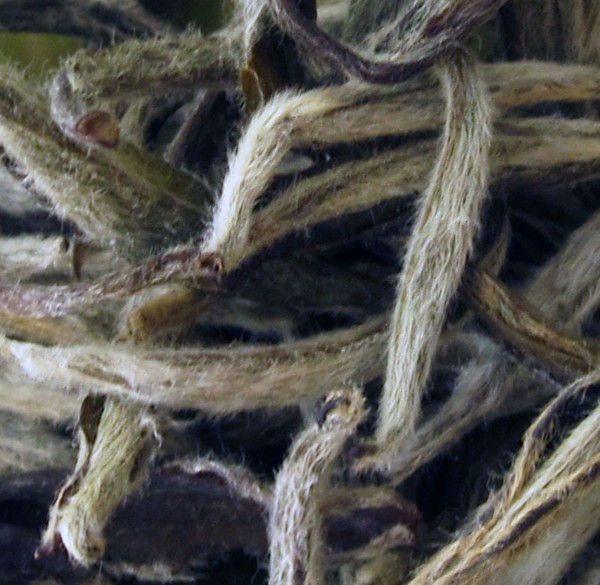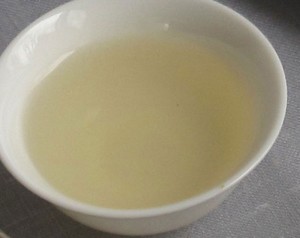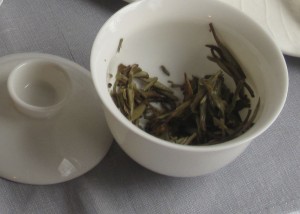
Myths and Vagaries
A few months ago I watched uncomfortably as a fellow tea sommelier asserted that the reason they had presented White Tea first was that “it was unoxidized”. I know this to be untrue, but I could understand how they might believe it. There is wide spread misunderstanding of White Tea with inaccurate information lounging everywhere on tea retail websites eg. “white tea contains almost no caffeine”. Another eg. “try our Anji Bai Cha White Tea”. Nope. It’s a Green Tea produced from a cultivar Bai Ye #1, whose leaves are pale due to lower chlorophyll production.
It may be perhaps that White Tea’s recent popularity has thrust itself on a consumer (or retailer) unaware. I’m encouraged however, that sound material can be gathered from trusted online sources and in published books, but not all of it simplified or in one place.
In the next few weeks we will see this year’s harvest of delicate White Tea appearing for sale. I believe that good knowledge of tea enhances one’s appreciation. Lately, I’ve been so frustrated about inconsistencies surrounding White Tea, that I decided to distill the knowledge I’ve gleaned into some clear information. So here’s the dope on White Tea!
Facts
- White tea is the least ‘processed’ of Camellia Sinensis sinensis. In other words it is not bruised or shaken or rolled or flattened.
- It is the longest withered. In ideal weather conditions it will be spread out on bamboo trays immediately after plucking for at least 24 hours in the sunshine in order to reduce its moisture content. If the weather is damp, this process will be done indoors in a climate controlled space for approx. 24-48 hours. Because of the length of this wither, the tiny buds (and/or some leaves) will oxidize slightly. It is then baked at a relatively low temperature for about 12 hours, re-sorted and baked again. This process may vary according to the grade of tea and tea maker’s own methods.
- White tea does contain caffeine, in fact the dry leaf contains quite a bit. Bud-style White Teas such as Bai Hao Yin Zhen (Silver Needles) are harvested from the first unopened budset to appear in the spring. These budsets are flush with nutrients, caffeine and polyphenols that protect them from insect attack. It is this high concentration of nutrients that allows White Tea the reputation of having enhanced health benefits. When it is steeped, however, at below boiling (within a range of temperatures, depending on your preference), the amount of caffeine will be low, because very little caffeine will have been extracted from the leaf into the tea liquor.
- It isn’t called ‘White’ because it is virginal, but rather the name-type “White” refers to the tiny white hairs or pekoe (rhymes with gecko) which cover the buds. This downy fuzz is another natural deterrent against insect attack.


- Most white teas originate from Fuding and ZhengHe in Fujian province, China and are plucked from the Da Bai Hao (Big White Bud) (大白毫) bush.
- The 4 grades of white tea most commonly available (all from China):
- Bai Hao Yin Zhen (Silver Needles, tender buds with lots of pekoe)
- Bai Mu Dan (White Peony, green and brown leaves with some light buds)
- Gong Mei (Tribute Eyebrow, don’t let the name fool you – this is the lowest grade, but still tasty)
- Shou Mei (Longevity Eyebrow, mostly leaves with very few buds and no pekoe)
- There is very good White tea being produced in Yunnan from the Jin gu (Pu er) ancient tree, not the Da Bai Hao bush, so it is quite different in flavour. One of these Whites is called White Moonlight and claims to be withered in the moonlight. It resembles a good-looking Bai Mu Dan grade in appearance.
- White tea is being produced in other regions of the world. Ceylon and Darjeeling are producing good Whites as is Malawi. I’m not sure if the Da Bai Hao cultivar is used.
- White tea has been produced since the Tang and Song Dynasties in China, but the current methods of production have only been used for the past century.
- Grading for lower grades is often done after the pick, with the bud and 2 tender leaves plucked. The bud is then separated from the leaves.
- Freshness and storage matters: If you have had a White tea that was a little too nuanced and subtle, it was probably not stored properly or in the case of Bai Hao Yin Zhen, may not have been fresh. BHYZ is best enjoyed in the year it is harvested and is very good in the weeks or months after it is produced. Bai Mu Dan, Shou Mei and compressed white teas in cake form, benefit from ageing, so they have a very good shelf life, if stored properly (airtight, opaque container away from heat and odours).
Tasting and Appreciation:


- When preparing a high grade Bai Hao Yin Zhen, Silver Needles, you’ll get better results if you make the tea in small quantities. i.e. using 2.5 grams of dry leaf in a gaiwan, for mulitple short steeps (around 30 seconds)
- Ideally, use spring water with low mineral count (around 55 – 100 ppm dissolved mineral solids), but filtered water will do. The water temp. should be around 80- 85°C, warmer than for green tea.
- Lower grades such as Bai Mu Dan or Shou Mei could be prepared in a gaiwan or a small teapot and steeped for 30 seconds – 1 minute. This is not exact as one’s individual preference will come into play.
- Bai Hao Yin Zhen (Silver Needles) is best appreciated on its own rather than paired with food. It’s liquor is pale yellow with sweetness and no astringency.
- Lower grade Whites eg. Shou Mei pair well with light fruits such as melon or lychee and Mochi (a sweet made with rice flour). The infused liquor of this tea has stone fruit flavours and some pine notes and has a darker liquor.
- Multiple steeps are possible with all grades.
Okay there you have it. I hope there are no inaccuracies in this post. You know – the kind that frustrated me in the first place! If there are, I would be relieved if you’d let me know. I’ve purposely left out some of the refinements of processing as they vary depending on the producer. One thing is certain – there will always be more to learn about this elegant tea.



